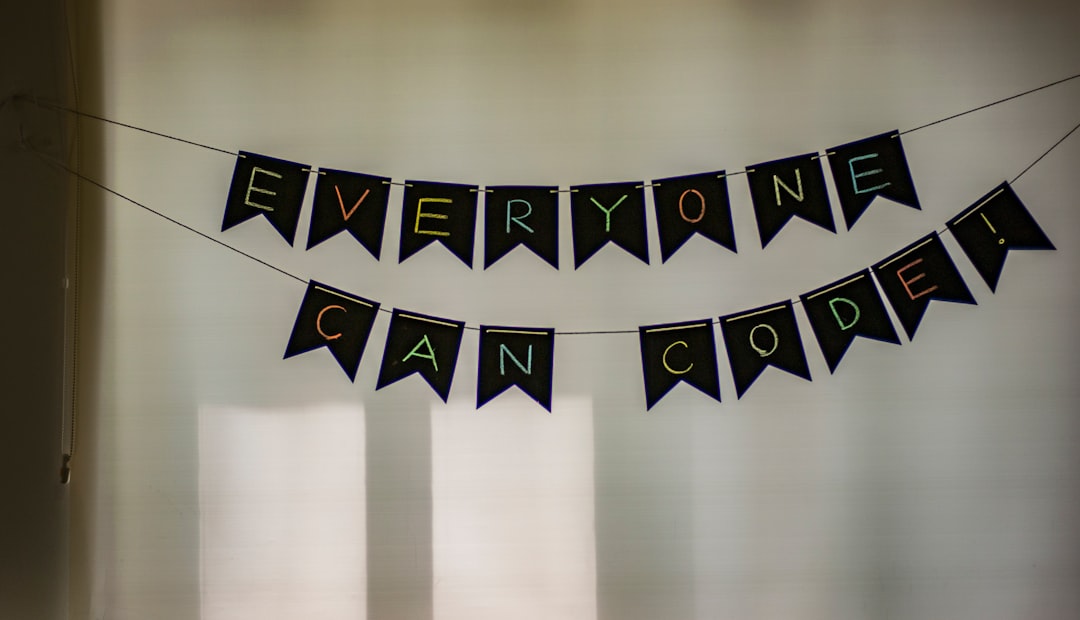As technology advances and dominates more aspects of our lives, it’s becoming increasingly important for children to have an understanding of how computers and software work. Coding, or the process of writing instructions for computers to follow, is a foundational skill that can prepare children for success in the 21st century job market.
In addition to the practical benefits, coding also fosters creativity, problem-solving, and logical thinking skills. Learning to code can be a fun and engaging activity for children, encouraging them to explore and experiment with technology in a way that is both challenging and rewarding.
By introducing your children to coding at a young age, you are giving them a head start on developing important skills that will serve them well throughout their lives. In this blog post, we’ll explore the benefits of introducing children to coding, outline some strategies for creating a supportive learning environment, and provide resources and activities for children to start learning how to code. So let’s dive in!
Setting the Stage: Creating an Environment for Learning
Before introducing your children to coding, it is important to create an environment that is conducive to learning. This means providing them with all the necessary tools and resources they need to begin learning and exploring the world of coding.
First and foremost, consider providing your children with access to a computer or tablet. This will allow them to begin developing their digital literacy skills, and provide them with a platform to begin exploring coding software and programming languages. Make sure that the computer or tablet is age-appropriate, and that the software and programs are easy to use and understand.
In addition to providing access to technology, consider creating a dedicated coding and learning space in your home. This space should be quiet, well-lit, and free from distractions. Stock the space with plenty of supplies, including paper, pencils, markers, and whiteboards, to encourage your children to brainstorm and sketch out their coding concepts and ideas.
Another important component of creating an environment for learning is to foster a culture of collaboration and creativity. Encourage your children to work together, and provide them with opportunities to share what they’re working on with each other. Consider hosting coding hackathons, where your children can work together in teams to create their own software or game.
Lastly, it is important to foster a growth mindset when it comes to coding. Encourage your children to take risks and try new things, and celebrate their successes as well as their mistakes. Remind them that coding is a journey, and that they will learn and grow with each challenge they face.
Overall, creating a positive and supportive environment for learning is key when it comes to introducing your children to coding. By providing them with the right tools and resources, and fostering a culture of collaboration and creativity, you’ll help them build the skills and confidence they need to succeed in the world of programming and beyond.
First and foremost, consider providing your children with access to a computer or tablet.
Start Simple: How to Introduce Basic Coding Concepts
Introducing your child to coding can be an exciting experience. However, it can also be intimidating, especially if you have little or no experience with coding yourself. The good news is, you don’t have to be an expert to get started.
When introducing basic coding concepts to your child, it’s important to start simple. Don’t overwhelm them with too much information all at once. Instead, focus on foundational concepts that will serve as building blocks for more advanced skills later on.
One of the best ways to start simple is by using visual programming platforms such as Scratch or Blockly. These platforms allow children to create simple programs using drag-and-drop interfaces rather than complex coding languages. This makes it easy and fun for kids to see immediate results from their coding efforts.
Another effective way to introduce basic coding concepts is through coding games. Many coding games are designed specifically for children and offer a fun and engaging way to learn coding basics. Some popular coding games for kids include Code Combat and Code.org.
It’s also important to provide your child with the necessary tools for coding. This might include a computer or tablet, coding software, and resources such as coding books or online tutorials. By providing these tools, you can help set your child up for success as they explore the world of coding.
Remember, the key to introducing basic coding concepts is to keep it simple and fun. By focusing on foundational concepts and using visual programming tools and coding games, you can help your child develop a love for coding that will stay with them for a lifetime.
This makes it easy and fun for kids to see immediate results from their coding efforts.
Fun and Games: Coding Activities and Resources for Kids
There are many ways to introduce kids to coding while making it fun and engaging. Luckily, today’s technology provides a vast array of resources that can make learning to code enjoyable experience for children. Here are some of the best ways to get them started:
Coding Toys and Games: There are tons of coding toys and games that you may want to consider, such as Code-O-Pillar or Scratch coding cards. These toys aim to make coding more accessible to young children by providing easy-to-use building blocks that introduce them to coding concepts in a fun and friendly way.
Online Coding Courses: Websites like Code.org offer a vast array of free coding resources for kids, including online courses that teach basic coding concepts through interactive activities and games. Other options like Scratch or Codeacademy offer a variety of tutorials that are geared towards ensuring that children take their first step confidently into the world of coding.
Coding Camps and Clubs: Many coding clubs offer coding classes for children where they learn coding in a fun and interactive setting. These classes help children learn coding concepts in collaborative environments which can be very helpful. Alternatively, coding camps like Code Monkey or iD Tech Coding Academy provide immersive coding experiences over an extended period.
DIY Projects: There are also many projects online that can help children learn coding skills in a fun and engaging way. For instance, creating video games, interactive stories, or music videos, using platforms like Scratch or Thimble, can be a great way for children to learn and practice coding skills in a fun way.
With a vast array of activities and resources available, there’s never been a better time to introduce your children to the wonders of coding. By engaging your child in fun and creative activities that involve coding, you’ll help them discover a new way of learning while building problem-solving skills that will serve them long into adulthood.
By engaging your child in fun and creative activities that involve coding, you’ll help them discover a new way of learning while building problem-solving skills that will serve them long into adulthood.
Beyond the Basics: Taking Your Child’s Coding Skills to the Next Level
Congratulations! You’ve introduced your child to the world of coding and they’re enjoying it! So, what’s next? As you might imagine, introducing coding to your child is just the beginning of a learning journey that can evolve in many different ways. In this section, we’ll discuss how parents can take their child’s coding skills to the next level.
First and foremost, it’s essential to understand your child’s strengths and weaknesses. Not all children will progress at the same rate, and, more importantly, not all children will enjoy coding at the same level. However, with that said, there are some great ways to help your child progress through the coding process.
One of the best ways to continue to engage your child is to encourage them to develop their own projects. By creating their own projects, they can learn how to solve problems, become more creative, and improve their coding skills. Furthermore, creating their own projects gives them a sense of ownership and responsibility that can help keep their interest.
Another great way to build on your child’s coding skills is to find mentors. Mentors can help your child learn different coding techniques or explain more complex programming concepts that may be difficult to understand. Look for online communities or local coding groups where your child can connect with others who are passionate about coding.
Online resources can also be a useful tool in helping your child reach the next level in their coding journey. From coding tutorials and interactive online courses to online platforms that allow your child to build and share projects with other learners, there are several websites that provide a great starting point. A quick search for “online coding courses for kids” is likely to yield quite an extensive list of resources.
Finally, it’s essential to keep your child motivated and interested in coding. Coding can be frustrating, and there will be moments when your child will want to give up. As parents, we need to encourage our children to persevere and remember the reasons why they wanted to learn to code. Celebrate the small achievements and progress that your child makes along the way.
Ultimately, coding has the potential to open many doors for your child, from future job opportunities to improving creativity and problem-solving skills. By taking your child’s coding skills to the next level, you are investing in their future and providing them with endless possibilities.
As you might imagine, introducing coding to your child is just the beginning of a learning journey that can evolve in many different ways.
Conclusion: The Future Looks Bright for Young Coders
As we’ve seen throughout this article series, introducing your children to the world of coding can have a significant impact on their future development. Not only does it help them develop crucial problem-solving and critical thinking skills, but it can also lead them to some exciting and good-paying careers down the line.
As the world continues to become more dependent on technology, the demand for skilled coders is only going to increase. By teaching your children how to code at a young age, you’re setting them up for a potentially bright future in a field that’s sure to continue to grow for years to come.
And the best part is that learning to code doesn’t have to be a chore. With so many resources and fun activities available online, your kids can enjoy the learning process while gaining valuable skills that they’ll use throughout their lives.
So, don’t wait any longer. Start introducing your children to coding today, and help them unlock their full potential for the future.
Conclusion: The Future Looks Bright for Young Coders
As we’ve seen throughout this article series, introducing your children to the world of coding can have a significant impact on their future development.
Encourage Your Child to Continue Learning and Exploring
Children learn by doing, and coding is no exception. Once your child has developed basic coding skills, the fun has just begun. Encourage them to explore coding through new projects and challenges that stretch their abilities beyond what they already know. There are countless resources online that will help your child to continue learning, so it’s important to take advantage of them.
Apart from online resources, there are also online communities where young coders can engage and learn from each other. These communities encourage children to share ideas, showcase their work, and find inspiration for new projects. This type of engagement helps to build socialization skills while still encouraging a love of learning and exploration.
Parents can also consider enrolling their child in a coding course or camp. This can be an excellent way to take your child’s coding skills to the next level while also providing an opportunity to meet with other like-minded kids.
At the end of the day, it’s important to remember that every child is different, and that the most important thing to encourage is their innate curiosity, creativity, and passion for learning. So even if your child doesn’t have a specific interest in coding, you can still introduce them to new skills and concepts in a fun and engaging way, helping them to develop a love of learning that will serve them well throughout life. Overall, the future looks bright for young coders and there’s no better time to start than now!





